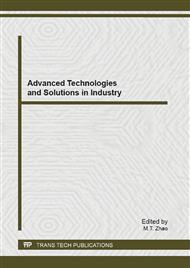p.285
p.290
p.294
p.298
p.302
p.306
p.311
p.315
p.320
Cavitation Erosion Behavior in Different Throttling Pipelines
Abstract:
Throttling pipelines are adopted to improve their cavitation erosion resistance, while there often exists cavitation erosion, large energy loss and big noise in throttling pipelines. In this study, the three-dimensional (3D) model of the secondary throttling pipeline was constructed according to the actual structure and parameters. It has been calculated that compared to the ordinary throttling pipeline, the secondary throttling pipeline makes the maximum velocity decreased from 19.827 to 19.168 m/s, and the minimum negative pressure increased from-2.02 to-1.77 MPa. The results is significant for choosing and designing the throttling pipelines.
Info:
Periodical:
Pages:
302-305
Citation:
Online since:
June 2013
Authors:
Price:
Сopyright:
© 2013 Trans Tech Publications Ltd. All Rights Reserved
Share:
Citation:


